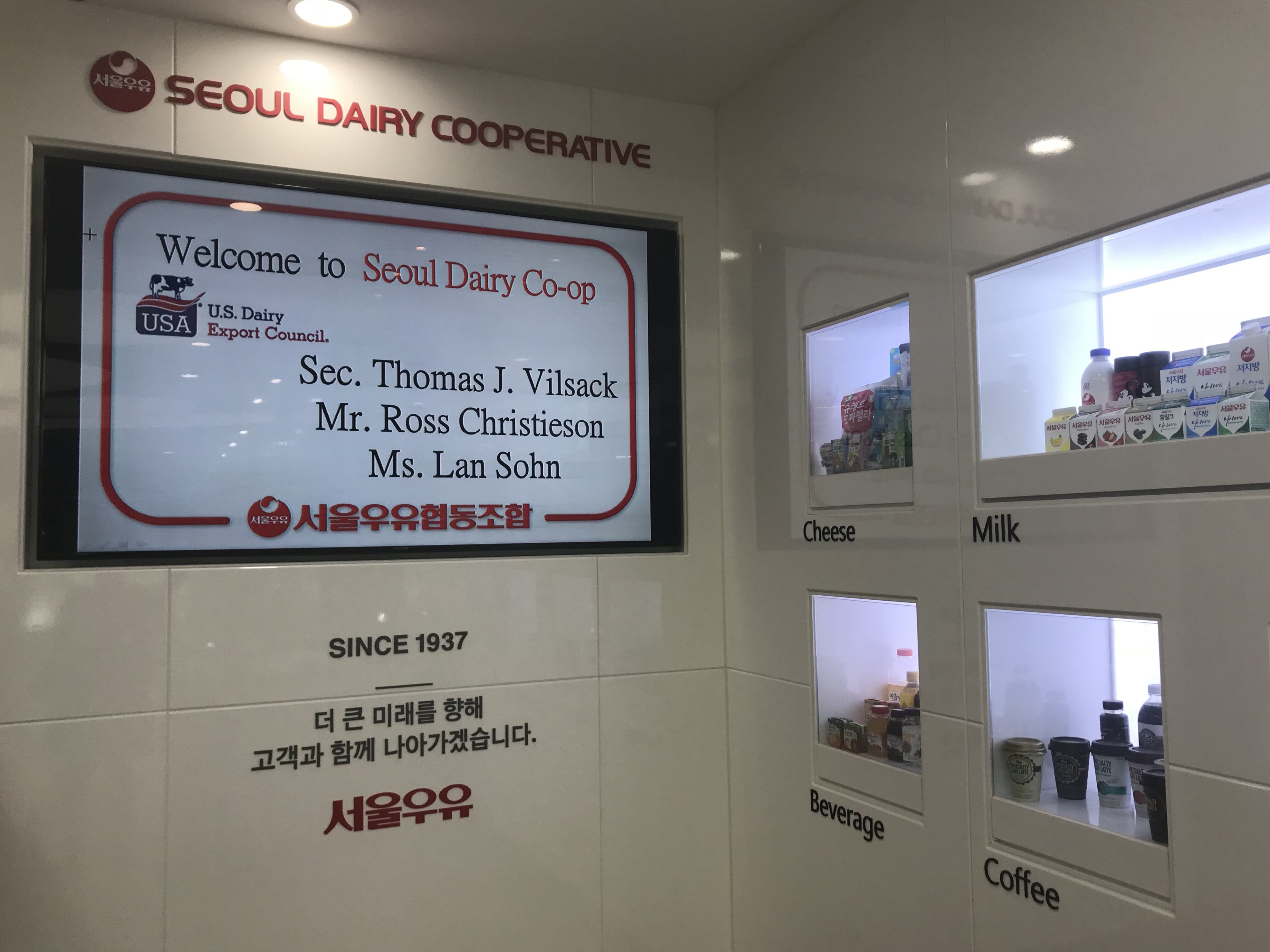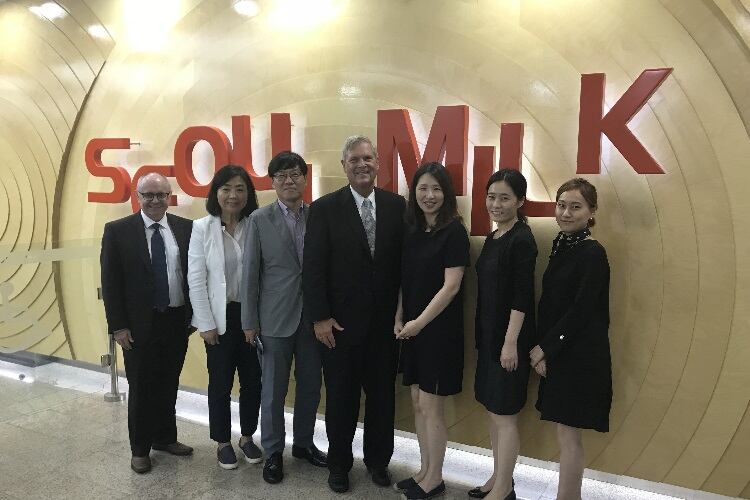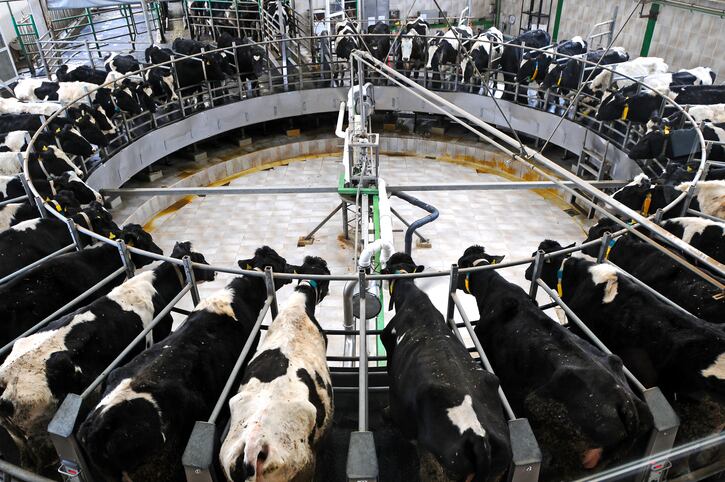Tensions have been high in the dairy industry this summer as President Trump has feuded with Canada, Mexico and China over trade regulations and tariffs. Fluid milk, cheese, whey and powder have been among the products affected.
Tom Vilsack of the USDEC recently traveled to China and South Korea with a member delegation to reaffirm the US’ commitment to its trade relationships and build groundwork for further market expansion.
Falling by the whey-side
Vilsack explained the primary reason for the trip to China was to make sure their industry knew US dairy is concerned about the tariff situation. He spoke to hundreds of Chinese dairy leaders at a China Dairy Industry Association meeting, reassuring the stability of safe, nutritious and sustainably-produced American dairy.
“I wanted to make sure that they understood that we’re going to continue to look for ways to strengthen that relationship, notwithstanding the current issues between our two governments,” Vilsack told DairyReporter.
The US and China have already traded tariffs on goods valued at more than $50bn, with a reported $200bn more expected to come. The US exported more than $577m worth of dairy to China in 2017, and milk, cream, yogurt, whey, butter and cheese products have been affected by the tariffs.
Whey is one of the most important and valuable products the US exports to China. Vilsack reports buyers and sellers have begun to subsidize the market to deal with the tariffs, but can’t make it work forever.
He says if the tariff war with China is not resolved by the end of the year, China will likely turn to other whey alternatives and find a new supplier at more reasonable trade rates, seriously damaging US whey producers and potentially losing the Chinese market altogether.
Cheese and powder are also seeing effects. Powder can easily be replaced by another supplier, leaving the US market vulnerable to another loss. Cheese has recently built a momentum in China, with a 45% increase in trade from 2016-2017. It’s now likely to take a hit from the tariffs.

Weak negotiations
President Trump announced last week he is dismantling the North American Free Trade Agreement (NAFTA), a trade deal between the US, Canada and Mexico. Trump has already struck a new deal with Mexico, but is still negotiating with Canada.
This move has caused significant waves in US dairy, considering Trump’s arguments about Canada’s high dairy tariffs and Mexico’s retaliatory tariffs on cheese from earlier this summer.
The new deal with Mexico does indicate progress, but Vilsack doesn’t think it’s enough to be on pace with resolving the Canada, Mexico and China disputes by the end of 2018.
“What I’m looking for is a sign of serious negotiations taking place. I don’t see that today. Obviously the administration is focused on completing NAFTA, which is one of the challenges of fighting these trade issues on multiple fronts,” he said.
“You only have so many people to assist in the fight. If [US Trade] Ambassador [Robert] Lighthizer is focused on NAFTA, he can’t be focused on China.”
Vilsack says the dairy industry is making its message clear to the Trump administration that trade talks need to be resolved as quickly as possible, finalizing a deal with Canada and ending its class seven milk pricing system so negotiators can pivot their attention to China.
Closing 5% in South Korea
In the midst of all the uncertainty, the industry is doubling down on its expansion efforts. The recent trip to South Korea allowed Vilsack to meet USDEC’s new in-country team that’s assisting with the industry’s 5% effort.
US dairy is working to increase total exports from 15% of production to 20%, with cheese in South Korea a key market for promotion. The country’s economy has been steadily improving, increasing its per capita income and ability to buy more high-end exports.
This, along with recent partnerships with Costco, chain restaurants and culinary institutes, is positioning South Korea to consume more cheese and establish more trade opportunities with US dairy.
Vilsack also shared that USDEC will be funding an upcoming study on dairy ingredient use in the Korean market. About 100 Korean food products are currently utilizing dairy ingredients of some sort and they hope to gain a better understanding of that ingredient market through the study.

$16.6bn lost by 2023
South Korea has been instrumental in US dairy closing the 5% target, but without the support of powerhouse trade partners like China, Canada and Mexico, it won’t come to fruition.
A recent USDEC study estimates all the retaliatory tariffs hitting the US could end up costing US dairy farmers $16.6bn in revenues over the next five years if left unresolved. Nearly $1.5bn has been lost in 2018 and $3bn is projected for 2019.
“The momentum that we built in China was incredibly important to our capacity and our goal of reaching 20% of milk production being exported. If that momentum gets stalled because the tariffs make it not competitive from a pricing standpoint, that’s going to make it a lot harder,” Vilsack said.


